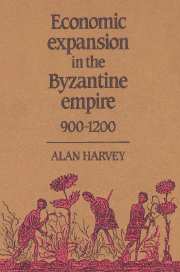Book contents
3 - Taxation and monetary circulation
Published online by Cambridge University Press: 06 August 2010
Summary
The structure of the rural economy imposed limitations on the vitality of monetary circulation. The main socio-economic unit, the holding of the peasant family, produced largely for its own consumption. It engaged in commercial activity only insofar as it was constrained to do so by the fiscal pressures of the state. Part of its produce had to be alienated to raise the cash for its tax-payment. This could be done by recourse to urban markets or a direct, compulsory sale of produce to the state at rates determined by the latter. When independent peasant farmers formed a significant proportion of the rural population, commercial activity was sluggish. As variations in wealth inside village communities became greater and the properties of powerful landowners more extensive, commercial activity was intensified because of the greater resources available to these property owners.
The circulation of coinage was determined largely by the interests of the state. It issued money to make its necessary expenditure, which was predominantly military and administrative. Consequently, the amount of money in circulation might vary greatly in different areas. Large quantities of money might be expected in important administrative centres, towns of strategic importance and the markets which armies used as they went on campaign. Most of the gold coinage, which was distributed in this way, returned to the treasury through tax-collections. The state required gold for most of its expenses and was not interested very much in the lower-value denominations, but these were more useful for most commercial transactions.
- Type
- Chapter
- Information
- Economic Expansion in the Byzantine Empire, 900–1200 , pp. 80 - 119Publisher: Cambridge University PressPrint publication year: 1990



